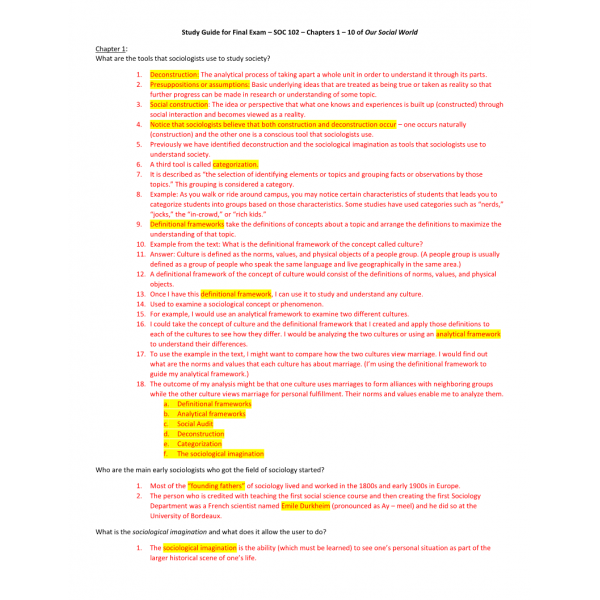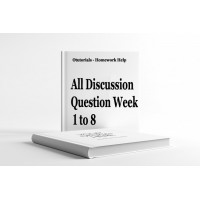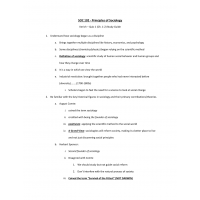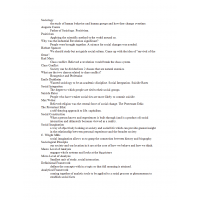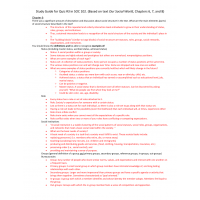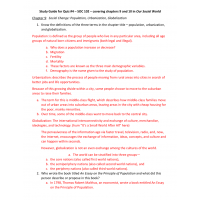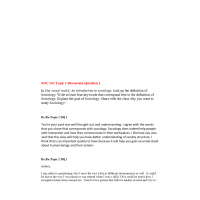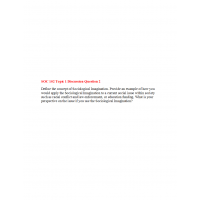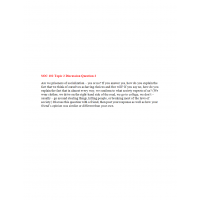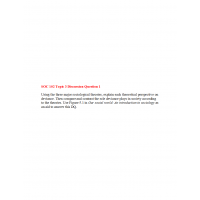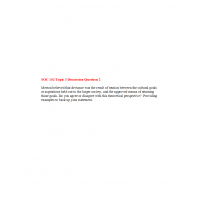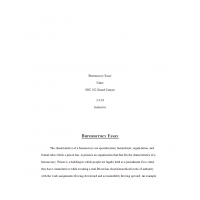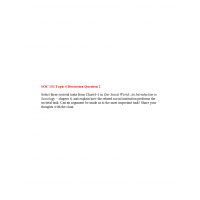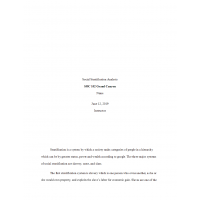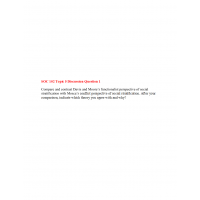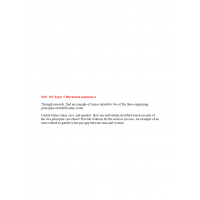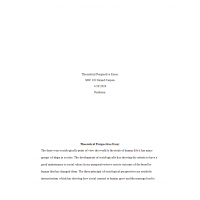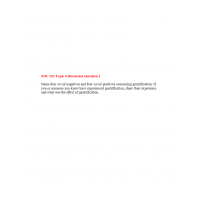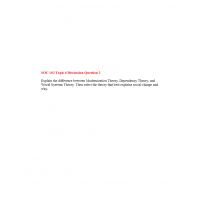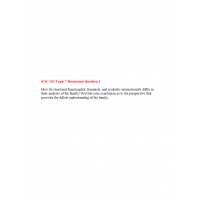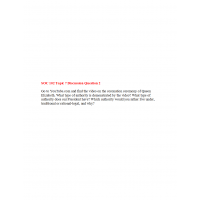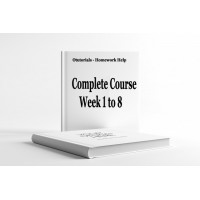SOC 102 Week 8 Final Exam Study Guide
SOC 102 Study Guide for Final Exam – Chapters 1 – 10 of Our Social World
Chapter 1:
What are the tools that sociologists use to study society?
Who are the main early sociologists who got the field of sociology started?
What is the sociological imagination and what does it allow the user to do?
What is the difference between troubles and issues as envisioned by C. Wright Mills?
What is the difference between macro-level analysis and micro-level analysis as it is carried out by sociologists?
When sociologists do research, the data (facts, information) they gather can be characterized as one of two types of data. What are these two types?
Chapter 2:
You will need to understand each of the three main sociological perspectives:
What are they?
How does each perspective seek to understand and describe society? What does each perspective consider to be important? What does each one look for? What are some of the main concepts that each perspective employs to describe and understand society?
Who are the main theorists who first started using each one of these perspectives? That is, whose name is associated with each of the perspectives?
Which perspectives are micro-level and which are macro-level?
Which early sociologists were concerned with what holds societies together? What were their answers? That is, what factors did they think held society together and what did they name these factors?
Chapter 3:
What do sociologists mean when they talk about culture? That is, what is included in their definition?
When we look at cultures other than our own, we tend to look at them in one of two general ways. What are those ways and what are the terms that are used to describe the two ways?
What is the name that sociologists have given to practices (ways of doing things) that are found in every culture?
Sociologists have described and named types of cultures from the earliest times to the present. You should know the main characteristics of each of these types and the inventions or discoveries that led to the transition to the next type.
Chapter 4:
-What are the major concepts and ideas of Charles Horton Cooley and George Herbert Mead? What are they known for? Show that you understand the main points of their thinking/writing. Be sure to be able to recognize examples of these concepts and ideas.
-Define each of the following terms and describe how they differ from the other terms in the list: socialization, resocialization, and anticipatory socialization. Be sure to be able to recognize examples of these concepts and ideas.
-What do the terms gemeinschaft and gesellschaft refer to? How are they different from each other?
Chapter 5:
What is the name of the concept that sociologists use to refer to both the formal and informal means that society uses to enforce its norms?
What is the distinction that separates deviant behavior from crime?
How do each of the three major sociological theories understand and describe the law and our legal system? What does each one emphasize as being important?
Edwin Sutherland is noted for his well-known explanation of deviance and crime. What factor did he think was the underlying cause of deviance?
Durkheim thought that deviance could actually be functional for society. What were his reasons for thinking this?
Chapter 6:
There was a significant amount of description and discussion about social structure in the text. What are the main elements (parts) of social structure described in the text?
You should know the definitions and be able to recognize examples of:
Status (including master status, ascribed status, achieved status)
Chapter 7:
You should know the definition of social stratification and the definitions of the various systems of stratification that are or have been in place in various societies now and in the past:
Which of the systems of social stratification is the most open system and which is the most closed system?
What do sociologists mean by the term social mobility?
What do structural functionalists suggest is the basic function of social stratification? That is, why does every society have a system of social stratification?
What is the meaning of the term cultural capital?
Chapter 8:
What determines one’s position in the class system of stratification, according to Karl Marx?
What is/are the organizing principle(s) of the class stratification system in the U.S.?
What are the definitions of the following terms?
- Objective indicators
- The poverty line
- Prejudice
- Discrimination
- Minority group
- Race
- Ethnicity (focus especially on the difference between these last two terms).
Chapter 9:
What do the following three things (variables) have in common?
Fertility, Mortal
What is the definition of the process known as the demographic transition?
What is the definition of the process known as gentrification?
What is the definition of the following terms?
- Urbanization
- Globalization
- Modernization
- Outsourcing
Chapter 10:
Who (what groups) are included by C. Wright Mills in what he called the power elite?
Max Weber identified three sources (or types) of authority. What are they?
What is the meaning of the term family of orientation?
What are some of the major facts that sociologists have discovered about divorce in the U.S.?
For instance, has it generally gone up or down in the past 85 years?
Are divorce rates higher or lower for first marriages compared with second or third marriages?
Do divorce rates generally go up or down with the age of those getting married?
Are divorce rates higher or lower for couples who have children compared to couples who do not have children?
Max Weber traced the origin of capitalism to what event or time period?
Durkheim wrote that religion had three main elements or components. What are they?
| Institution & Term/Date | |
| Term/Date | Grand Canyon |
-
$40.00

